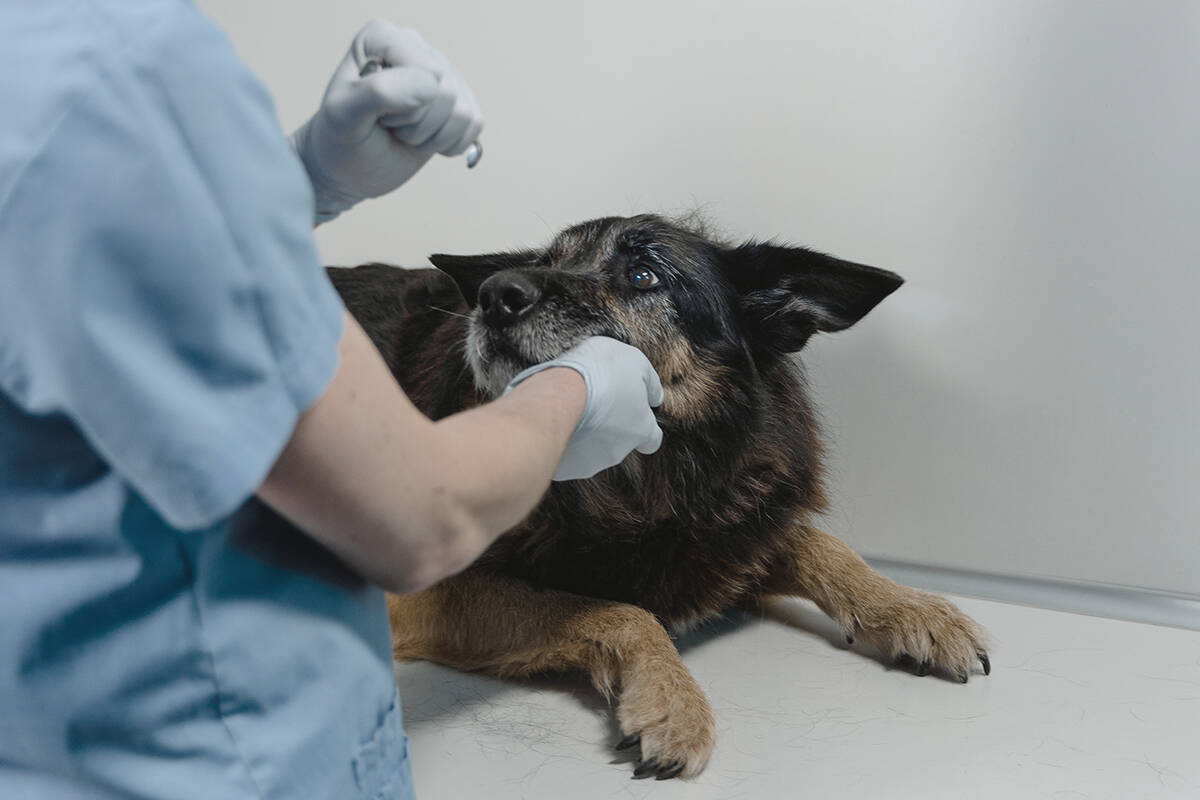A Nanaimo emergency veterinary hospital is sounding the alarm over a rare disease occurring in dogs.
According to a press release issued by Central Island Veterinary Emergency Hospital, necrotizing fasciitis, a disease that is difficult and expensive to treat and often fatal, has cropped up in six dogs in Nanaimo, Parksville and Qualicum Beach since October.
Nectrotizing fasciitis is a deep-seated infection of the skin, underlying fat layer and connective tissue surrounding muscles. A number of different bacterial species have been known to cause the infection, most commonly streptococci species, the release noted.
Veterinarian Catherine Daniel said she has submitted the cases to the Canadian Animal Health Surveillance System. The most recent case appearing the system was from April – details of cases on the system only appear with the pet owner’s consent – for a dog in Parksville that had to be euthanized. Two of the cases listed were in Nanaimo and all cases occurred in different breeds. Of the five cases listed, four of the dogs had to be euthanized and one dog died soon after arriving in hospital.
Daniel said the disease is extremely rare, in about one in 300,000 humans in the U.S., but the disease in dogs is caused by a different bacteria.
“In humans, flesh-eating disease is caused by a group A streptococcus, but in dogs it’s caused by a group G, specifically usually streptococcus canis, which is species-specific,” Daniel said. “There have been cases reported in cats, but it would be extremely rare for a human to contract it. They would have to be very immune-compromised and they would have to come in direct contact with the infectious material.”
The bacteria typically gains access to underlying tissues through puncture wounds, skin infections or other trauma, but wounds are not always obvious or seen.
Daniel said the disease is so rare in dogs that veterinarians can spend their entire careers without encountering a case and she doesn’t know why cases seem to have spiked in the central Island in recent months.
“We’re not sure. That’s why we’re looking into it,” she said. “That’s how this all came about, because I’ve started doing some research around it and, for now it’s getting some publication. We’re going to be doing a survey to owners of infected animals in terms of trying to figure out if there’s any kind of commonality between them.”
Daniel said streptococcus canis naturally colonizes the skin and gastrointestinal tract of most animals, particularly dogs and cats, and doesn’t cause disease in most healthy animals, but in the dogs she has encountered with the disease there could be some form of environmental factor that contributed to the animals developing necrotizing fasciitis.
“The fact that we have the bacteria does not mean that the disease will occur,” she said.
If more cases occur, she and other veterinary staff at the hospital will send cultures to an infectious disease specialist in Ontario for analysis to see if there’s a new strain emerging or virulent factors involved contributing to new cases. Daniel said the veterinary community does not know what contributing factors are because cases are so rare, but there has to be some particular instances that create the right environment to cause the infection. Those currently aren’t understood but she hopes the survey will provide data that will help tease those out.
There does not appear to be any outbreaks beyond the Island.
READ ALSO: 8 puppies with serious health issues brought to Nanaimo SPCA for care
Pet owners should be wary if their dogs display certain symptoms. Pets with pain, especially in a limb, with or without swelling should be seen by a veterinarian. Usually, there is no discolouration of the skin, but it can develop over a few hours and a fever is a commonly associated with necrotizing fasciitis.
Pets diagnosed with the disease require urgent and intensive therapy to try to manage the fasciitis, which can include surgery to eliminate infected tissue to try to halt the spread of the infection. The procedure can range from removing small sections of tissue to limb amputation.
Daniel said treatment, including aggressive surgical intervention, is costly – as much as $15-20,000.
Daniel said she hopes the cases will simply stop.
“I’m hoping it just peters out and we never have to see it again and, hopefully, I’ve had my share of the cases, but if it does keep going we kind of felt we needed to get the ball rolling, in terms of investigating, so that, at least, we can get in front of it if it is something that’s going to take off,” she said.
photos@nanaimobulletin.com
Like us on Facebook and follow us on Twitter

